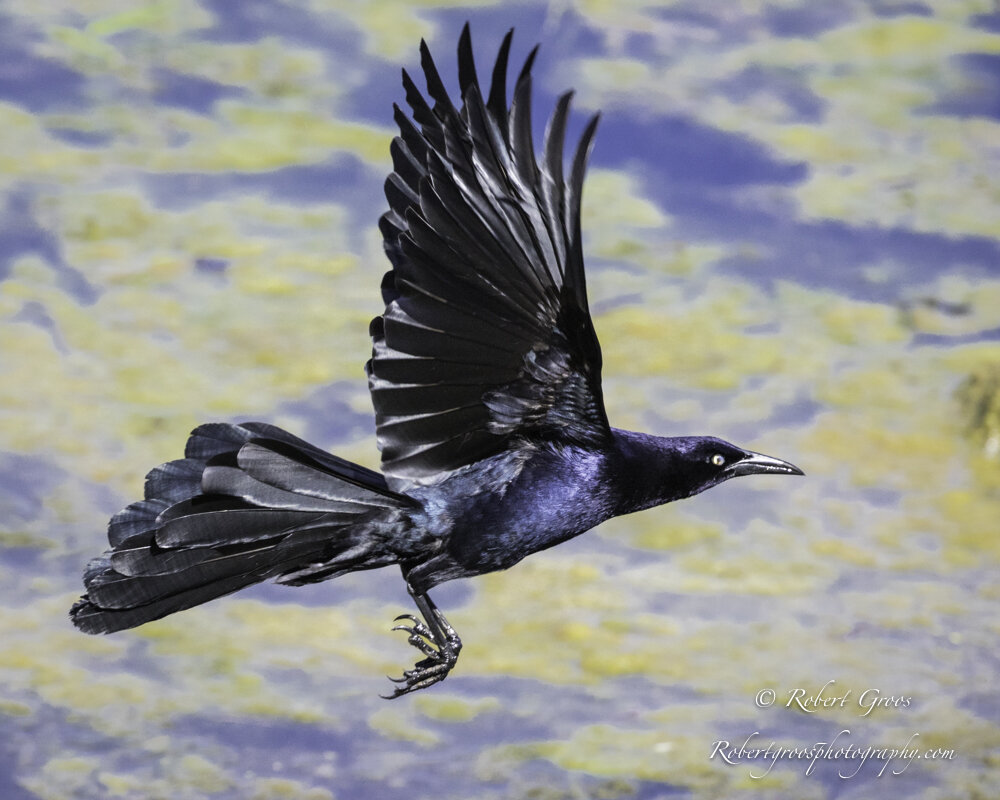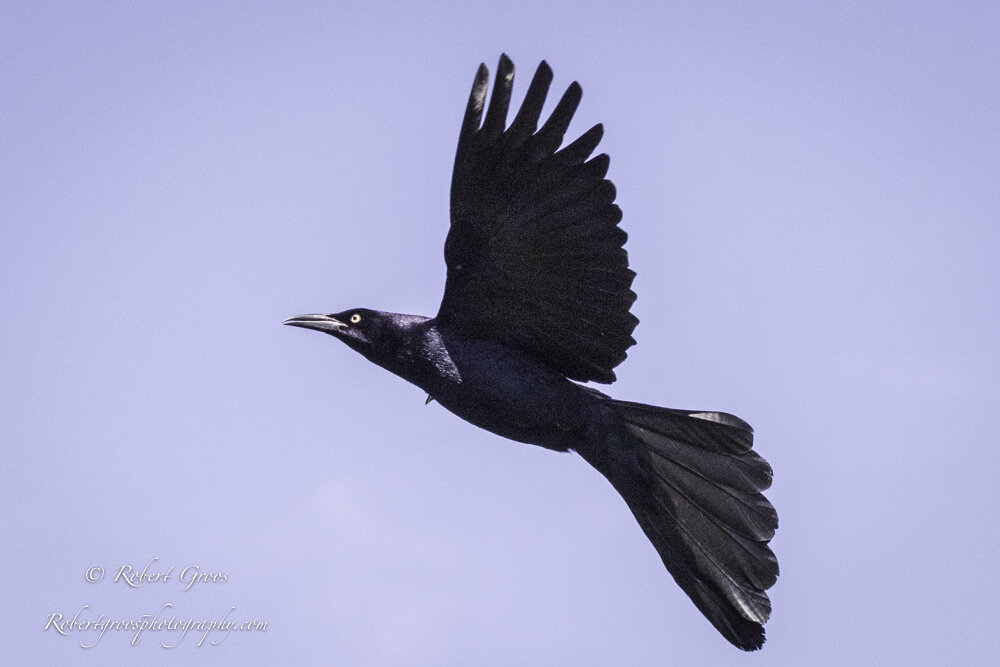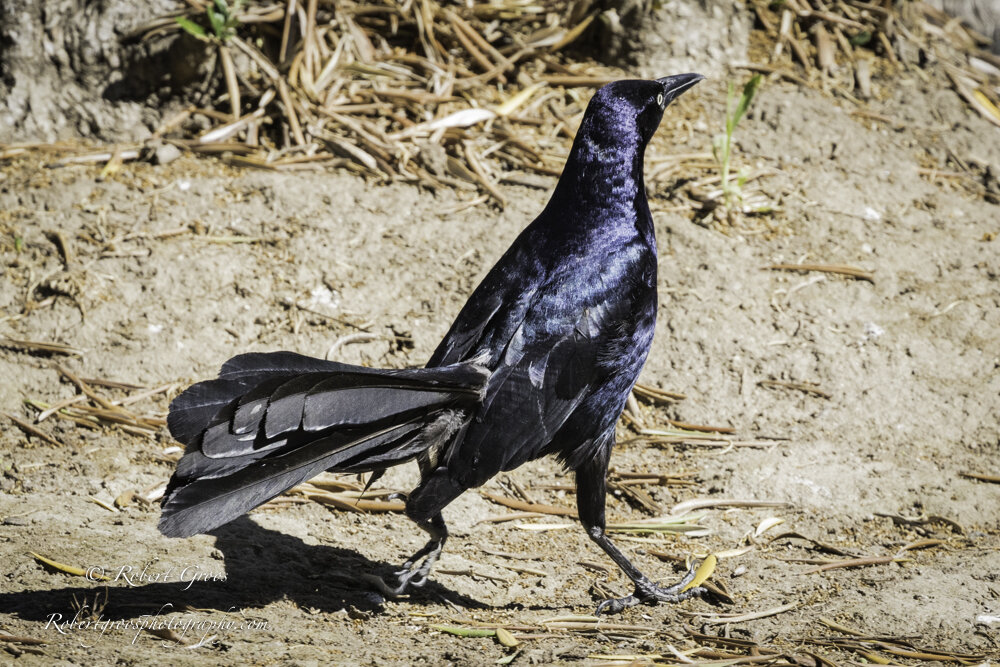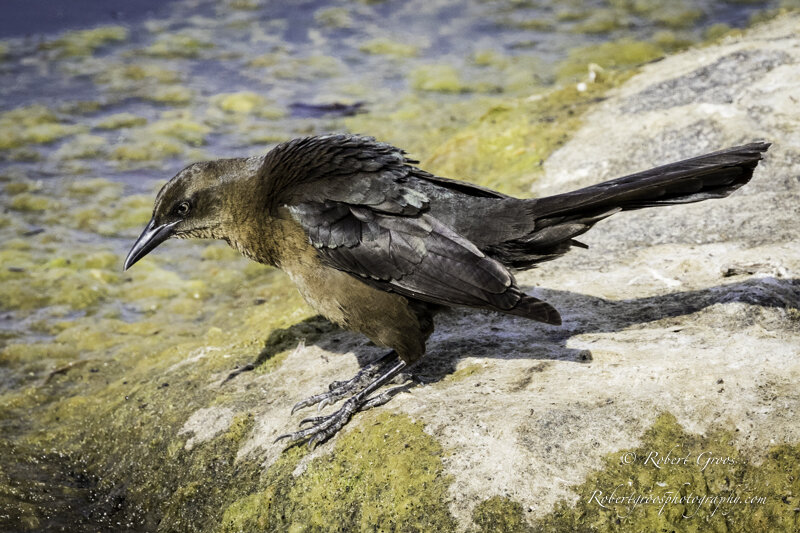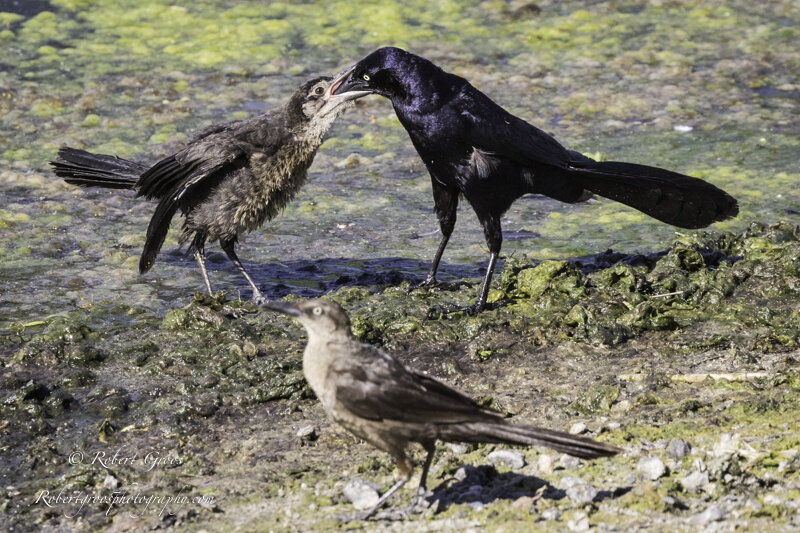Great-tailed Grackles
What do birds and wrestling have in common?
Nothing, actually, unless the bird happens to be a Great-tailed Grackle (quiscalus mexicanus). These boisterous blackbirds occupy the trees around the lake near my home in the Sierra foothills from spring through fall. To my amazement, I happened upon an avian “lucha libre” this past spring.
Male great-tailed grackles wrestling on the ground.
At first I thought it was a mating ritual, a rough one for sure. On closer look, I realized it was two males rolling on the ground, screeching up a storm, beaks and wings, tails and talons in each others face until, ultimately, one bird lay motionless in submission to a stronger foe. It was quite extraordinary to watch.
Great-tailed grackle wrestles a challenger into submission.
Having long legs and a slender body with a black and purple sheen, the male Great-tailed Grackle grabs the brass ring for refined elegance among the birds of my region. And the tail! What a magnificent tail it has, one almost as long as his body. In flight, the tail may spread open like a fan, fold into a V, or even be shaped like a boat keel, creating drag as the bird moves slowly through the air.
On the ground, males strut their stuff like they are king of the mountain. They move boldly, swooshing their tail from side to side as if ready to swat anyone silly enough to approach.
Walking with tail swooshing behind.
A raised bill is a dominance posture.
A bill raised towards the sky is a posture designed to intimidate other males. Yellow eyes framed in jet black create a fierce look of determination. As brash as they may appear, Great-tailed Grackles can be surprisingly skittish. If you stare at them too long, their courage evaporates like the mist and they go airborne into the cover of the trees.
Great-tailed Grackles forage mostly for plant material; being omnivores, however, they won’t pass up a fish or a frog, lizard or mouse whenever the meal presents itself.
Foraging for an aquatic meal.
Originally native to Central and South America, the species has benefited from human alteration of the landscape and moved rapidly northward since the early 1900s. Flocks now occupy parts of the West, Southwest, and Great Plains, flourishing in both agricultural and urban developments (lawns, parks, golf courses) where water is available.
Great-tailed Grackles are highly social birds. In south Texas, along the Rio Grande valley, tens of thousands assemble in winter roost trees. Oh my, can you imagine what a clattering clammer of clicks, clacks, cackles, shrieks and whistles an assemblage of several thousand individuals must produce?
Click below to hear the vocalizations that emanate from just a few individuals (courtesy Xeno-Canto.org)
As you gather your family around the barbecue this weekend, wearing masks and social distancing six feet apart, arm yourselves with a bugle, a piccolo, a drumstick or two, some kazoos and party noisemakers. Join Great-tailed Grackles in raising a collaborative commotion to commemorate the anniversary of the birth of our nation.
Happy Fourth of July, 2020
p.s. If you are not already on my mailing list and wish to be added for future posts, please send an email to: robertgroos1@gmail.com. Your information will not be shared, and you can unsubscribe at anytime. Thank you.




